Cleavers
- Madder (Rubiaceae family):
- Galium aparine L.
- EPPO code:
- GALAP
- Other names:
- Catchweed bedstraw, goose-grass, grip grass, scratch-grass, spring cleavers
Species information
- Lifecycle:
- Annual.
- Propagation:
- Reproduces by seed.
- Emergence:
- Cleavers emerges throughout the spring, summer and fall. Seemingly, though, fall is the most common time for emergence in cultivated fields.
- Habitat:
- Cleavers lives in many environments, but thrives in relatively dry, sunny areas. It does not, however, tolerate shade.
- Competitiveness:
- Cleavers causes cereal crops to lodge and reduces harvesting efficiency. Yield losses in cereals have ranged from 30–60%.
Identification clues
Seedling
- Cotyledons:
- Egg shaped on prominent petioles with a rough texture; the tip is indented.
- First leaves:
- Cleavers’ first leaves appear in whorls with three or more leaf blades.
- Mature leaves:
- Mature leaves appear in whorls of 6–8 narrow leaf blades, each with a pointed tip and rough to the touch.
Mature plant
- Stem:
- Cleavers’ stem is weak, long and square, with short, downward and backwards pointing firm, hair-like curved bristles.
- Flowers:
- They are very small and clustered in groups of 1–5; they are quickly replaced by small, spherical fruit. The plant flowers from May to August.
- Roots:
- Fibrous, creeping and usually with a reddish colour.
Often mistaken for
I know it's not Smooth bedstraw because cleavers has a very coarse texture and will stick to clothing. Smooth bedstraw, on the other hand, is hairless and smooth to the touch.
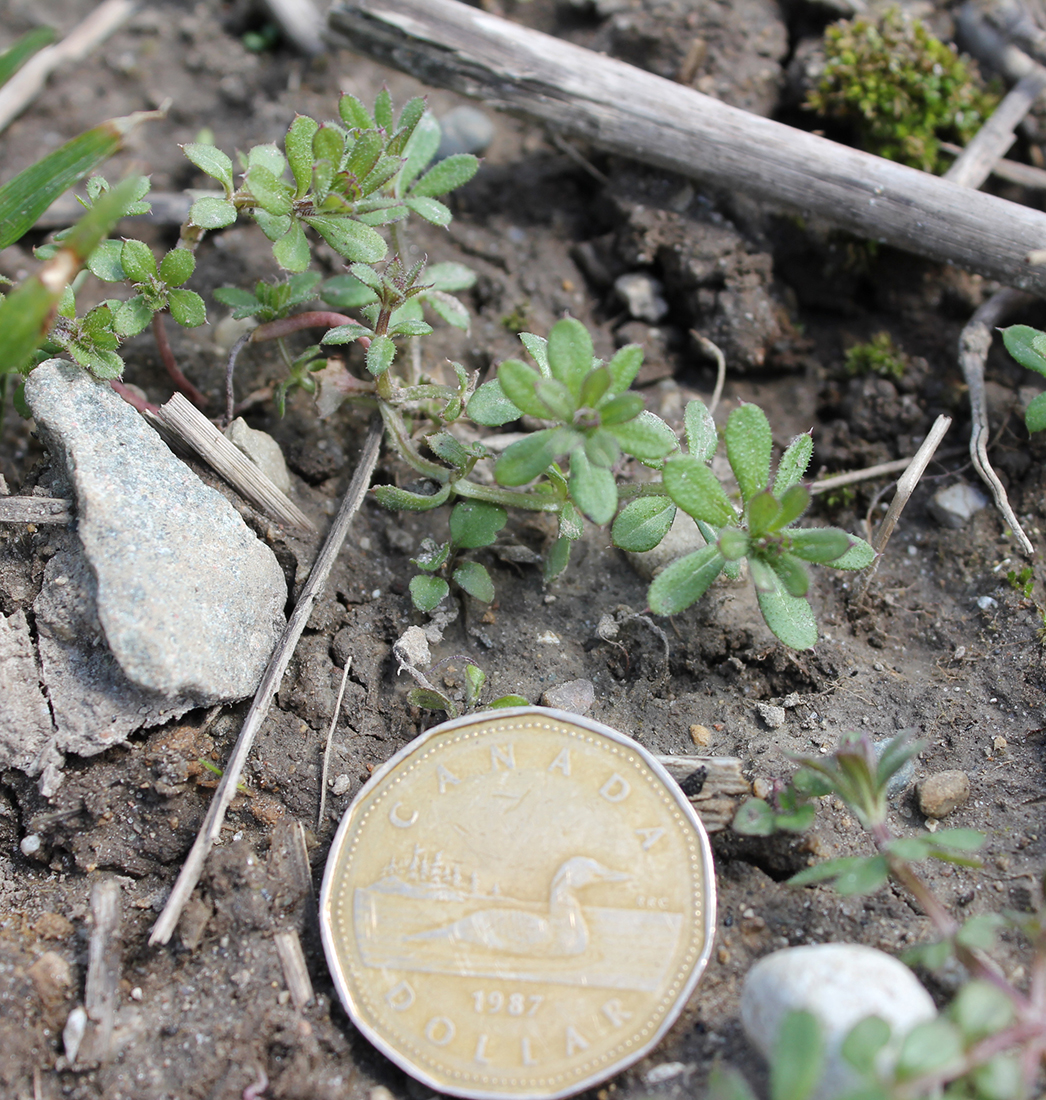
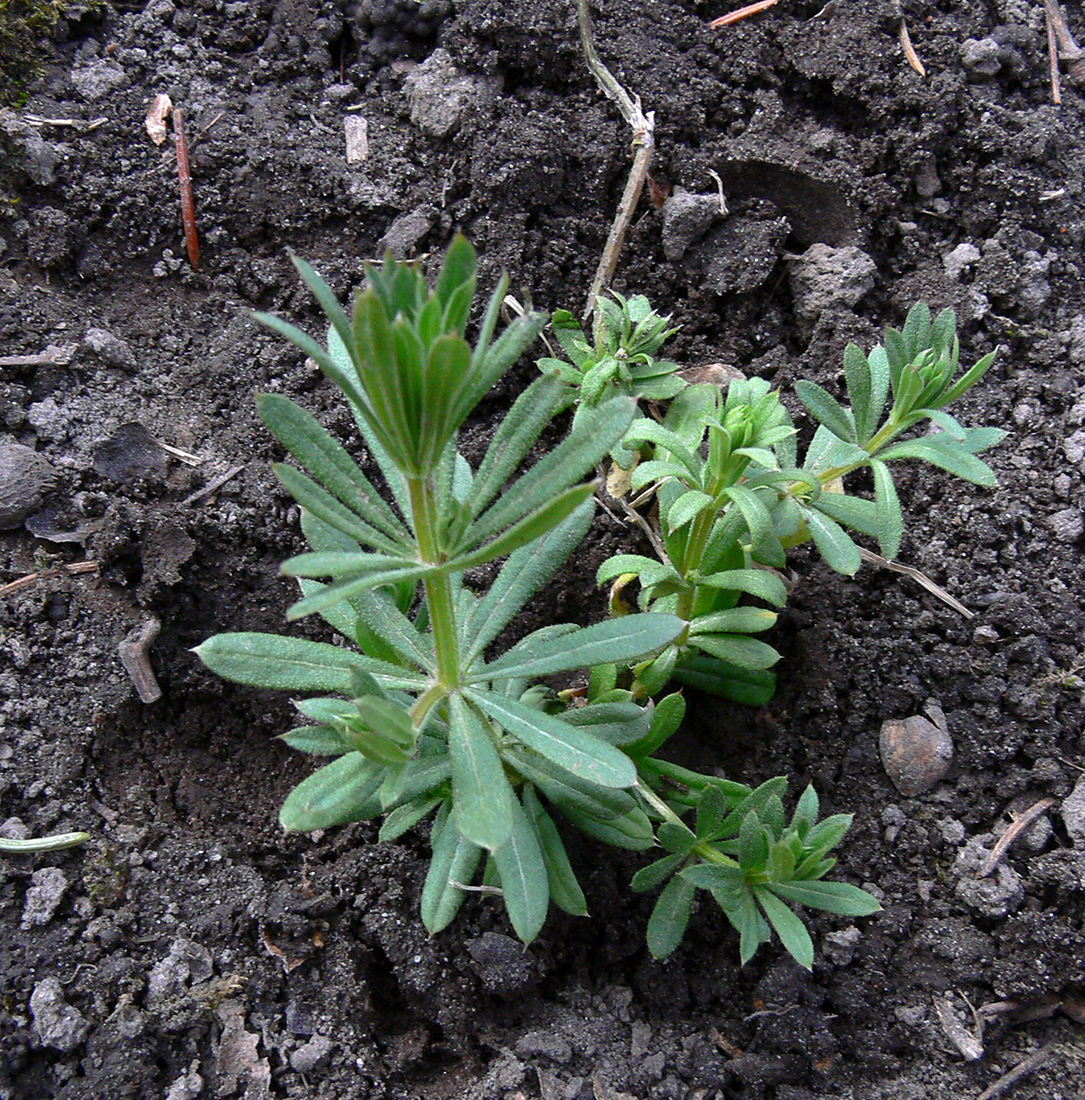
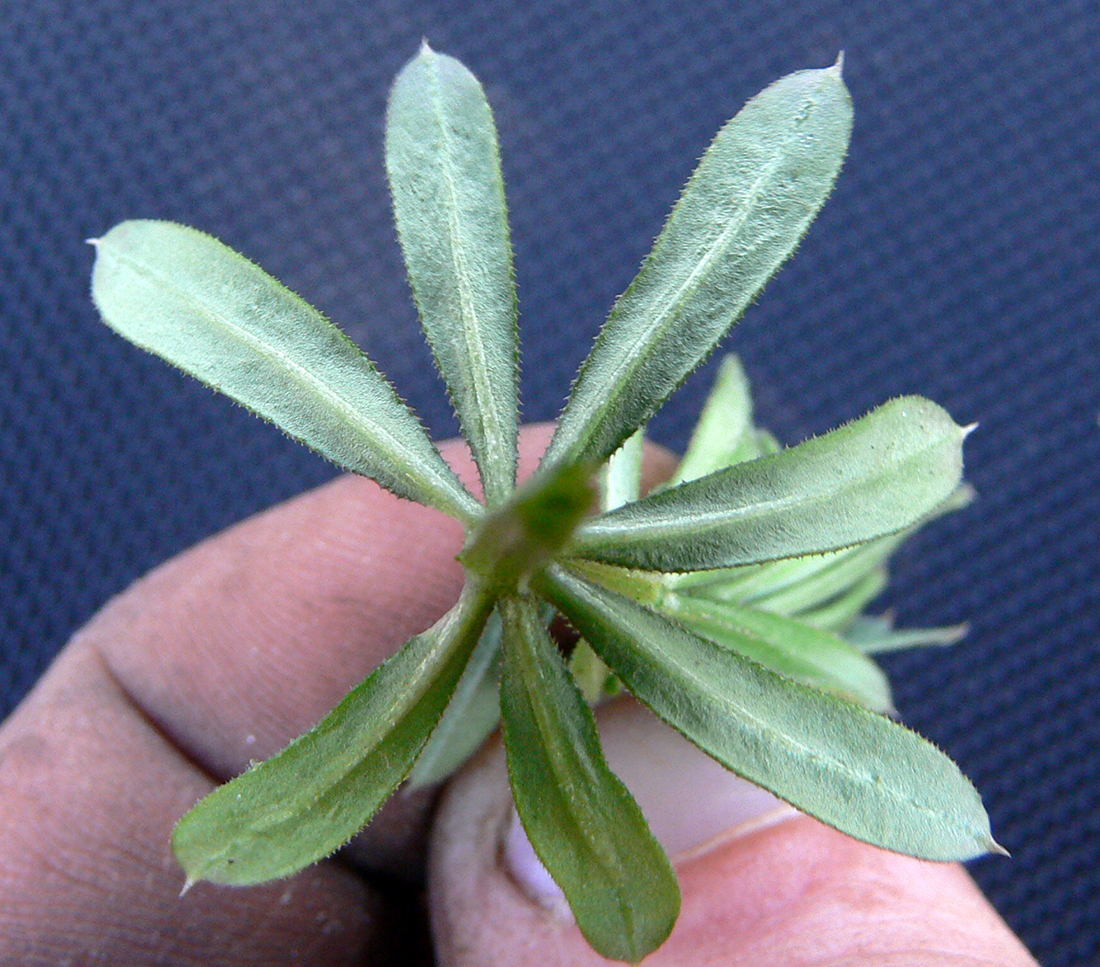
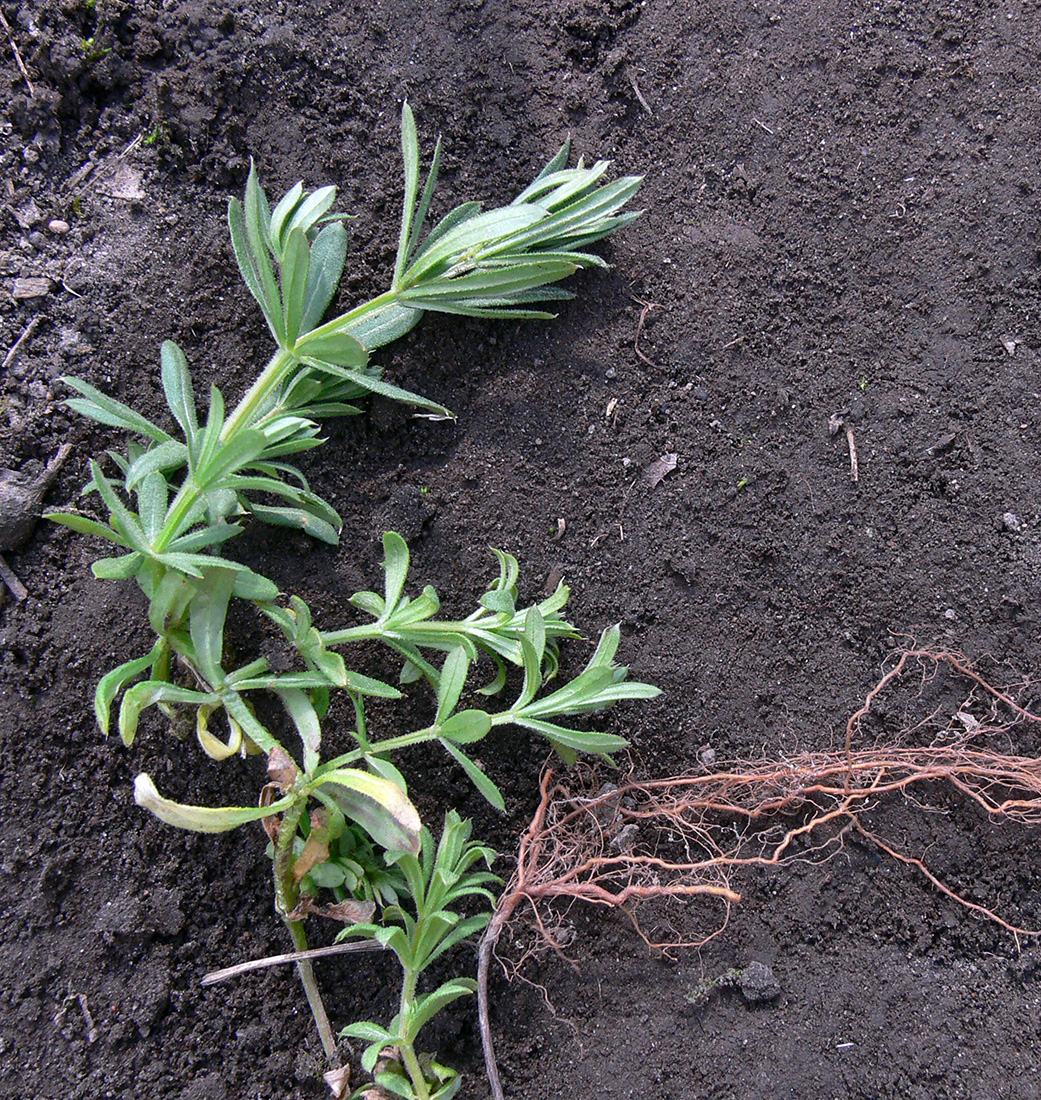
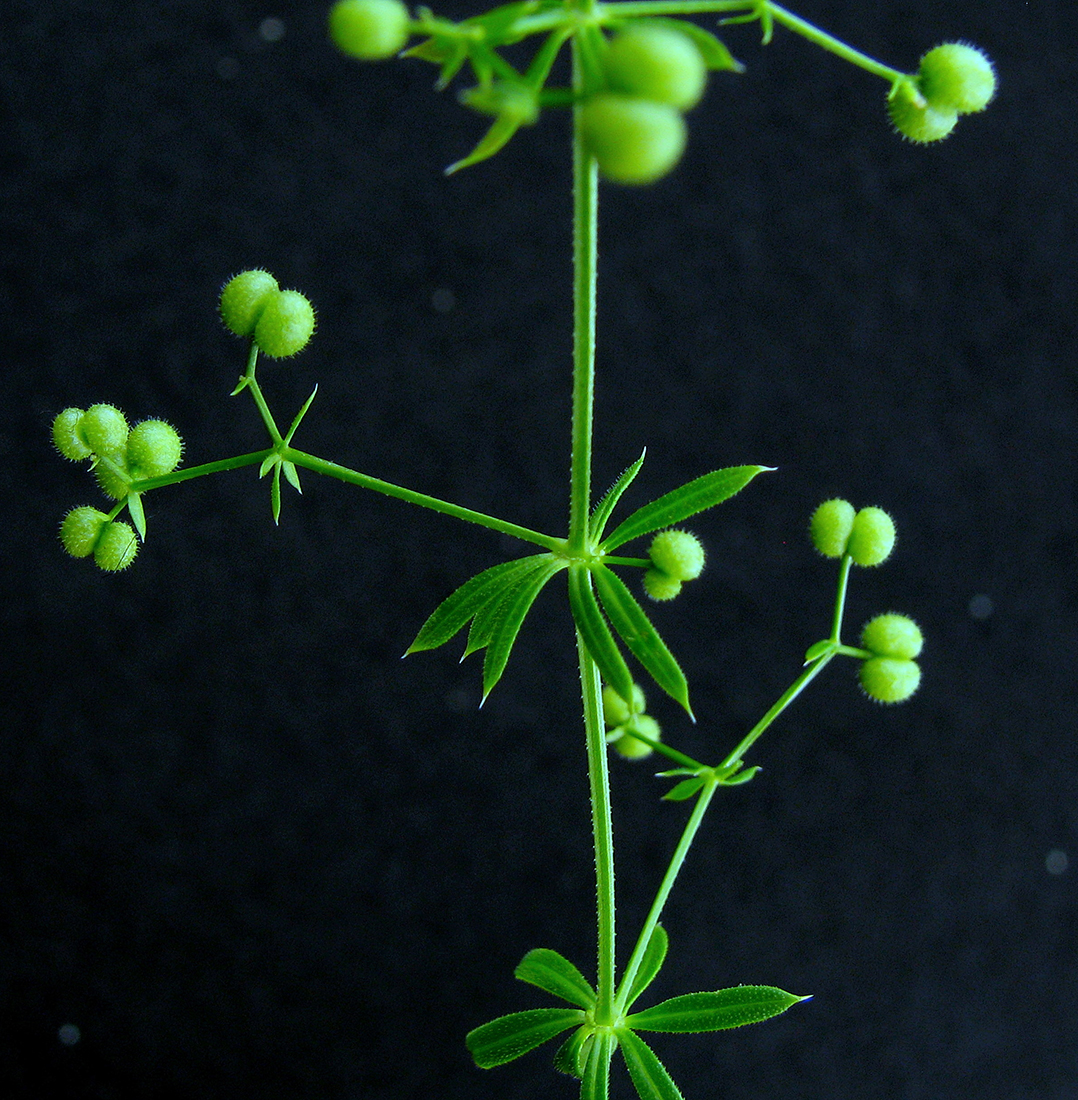
Updated: January 13, 2023
Published: January 13, 2023